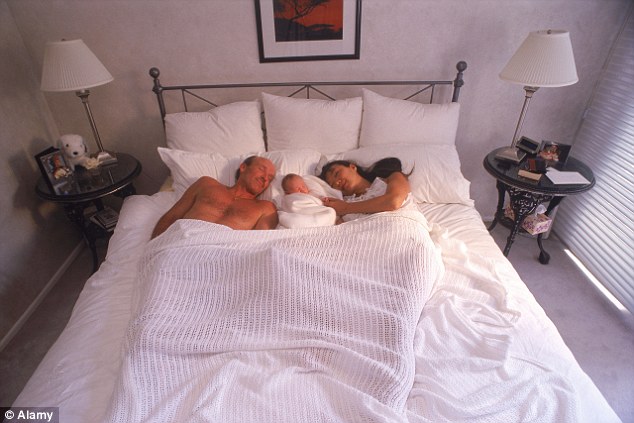Why Bed-sharing With babies Is Dangerous | Paediatrician, Dr. Abdurrazzaq Alege Explains

A Consultant Paediatrician, Nephrology Division, Federal Medical Centre, Katsina State, Dr. Abdurrazzaq Alege, has warned that babies who share beds with parents might be at risk of sudden death, noting that a condusive sleeping environment is critical for their survival.
According to the child health expert, healthy sleep is important to the wellbeing of an individual, especially in infancy and early childhood when a greater part of the day is spent sleeping.
Dr. Alege told PUNCH Healthwise during an interview that as important as the duration of sleep is, so also is the sleeping position, sleeping space and environment.
The paediatrician noted that the position a child adopts while sleeping had been found to be related to various ailments, with the major one being Sudden Infant Death Syndrome.
The American Academy of Paediatrics, AAP recommended room-sharing without bed-sharing for at least the first six months of life.
The organisation also discouraged bed-sharing with infants younger than one, warning that the practice put babies at risk of suffocation, strangulation and parent rollover. AAP noted:
“Bed-sharing is dangerous because parents can accidentally roll onto their baby, causing injury or suffocation. Soft objects, such as pillows or blankets, can also lead to strangulation and suffocation throughout the night.
The risk of bed-sharing death also increases in the following circumstances: if someone in bed is a smoker, the mother smoked during pregnancy, or a parent has impaired alertness from drugs, alcohol, or medication.”
Giving insight into the importance of sleeping position, space and environment in the survival of infants, Dr. Alege said,
“Stomach or tummy-sleeping for children less than one year is not good because it can be very stressful for the baby, especially when the baby remains in that position for a long time.
Normal breathing may become compromised especially when the bed surface is too soft or woolen. The nostrils may become partially or completely blocked, thereby reducing oxygen supply to the brain. This may lead to suffocation, convulsions and possibly, death.
Also, deaths have been associated with babies sharing the same bed with their mothers rather than being allowed to sleep alone in their cots. As lovely as sharing the same bed is, the baby can easily get trapped under the mother when both are deep asleep or may even fall off the bed unnoticed.”
The paediatrician further noted that although SIDS is not well reported in developing countries like Nigeria, evidence from the developed countries had shown that the incidence of SIDS reduced by 33 per cent when children were placed on their back to sleep.
He said:
“But despite this reduction by sleeping on the back, we still get reports of sudden death in infants in some cases. Therefore, other factors still contribute. These include the sleeping environment, especially if the bedding is too soft and the material interferes with breathing.”
Dr. Alege said it is important first, for mothers to understand that most children that are less than one year cannot easily change position while sleeping, adding that mothers should adopt a position that is best for the health and well-being of their babies.
Continuing, the paediatrician said,
“As mentioned above, tummy or stomach sleeping is dangerous for the infant. Also, it is not good to place the child on the side because this is very unstable. The child most times ends up lying on the stomach after some time, unless the mother actively supervises this, which may be cumbersome or tiring for her too.
Also, lying too long on the side allows the head to remain too long on that side. This can result in mishappening of the head, and can explain why some babies often have abnormal head shapes.”
ALSO SEE: Paediatrician Tips Mothers On Ways To Care For Their Babies During Teething
On how parents or adults can share rooms safely with babies, KidsHealth, a portal that focuses on children’s health stated,
“Keep your little one close, but not in your bed. Put a bassinet, play yard, or crib next to your bed. This lets you keep that desired closeness, which can be especially important if you’re breastfeeding. Having an infant sleep in a separate space in the same room as the mother reduces the risk of SIDS.
Consider using a bedside sleeper, which attaches to your bed, letting you and your baby be next to each other but on separate surfaces.
The Consumer Protection Safety Commission recommended safety standards for bedside sleepers, but no studies have looked at whether these devices prevent SIDS and other sleep-related deaths or injuries.
Experts recommend that infants sleep in their parents’ room without bed-sharing until their first birthday. If parents prefer to move the baby to another bedroom, it’s best to wait until the child is at least 6 months old.”


